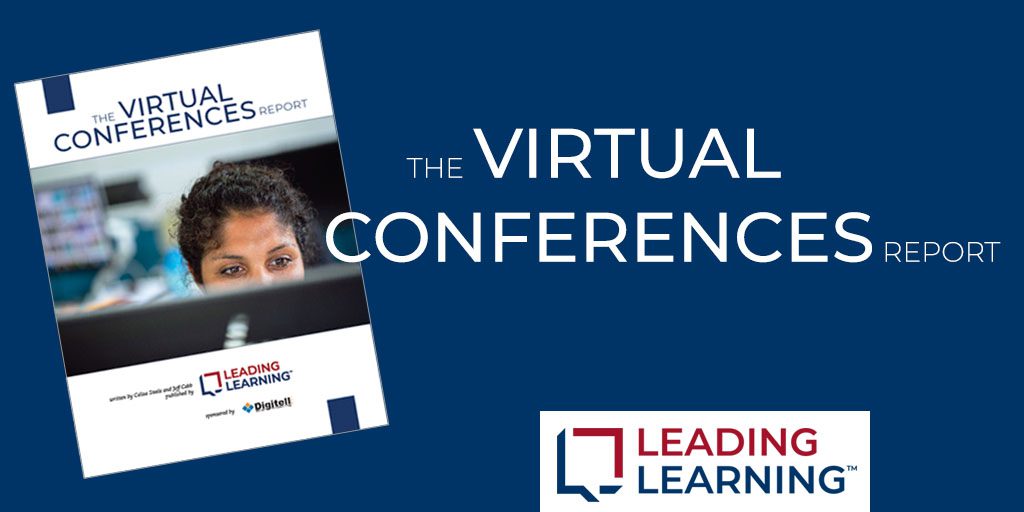
If you’re in the learning business, chances are you’ve held a virtual conference by now. In fact, our latest research shows that roughly 84% of organizations have held at least one in the past year, a growing trend that has almost quadrupled since the release of our last report in 2020.
Of course, the reason for this huge leap is glaringly obvious—ahem, coronavirus. But what might not be so obvious is how effective your virtual conference was compared to other organizations and—even more importantly—how this comparison can shape your decisions in the future. The Virtual Conferences Report provides the information and insights you need to assess and benchmark how your learning business measures up in practically every aspect of hosting a virtual event.
From strategy and pricing, to technology, engagement, and more, this comprehensive report is designed for decision-makers who want leading-edge knowledge to support their strategic planning for virtual conferences. It is the must-have resource for learning and event professionals in this now highly competitive (and likely here-to-stay) format. It’s also equally valuable to vendors who serve or aim to serve the events and meetings industry.
The Virtual Conferences Report will help you:
- Compare and measure your approach to virtual conferences against hundreds of others in the industry
- Determine timing and pricing for your virtual conferences
- Understand what level of registration and attendance to expect
- Identify the tools most commonly used to deliver virtual events
- Avoid the mistakes and benefit from the success of other organizations
- Build the business case and make data-driven decisions about the role of current and future virtual events
The Virtual Conferences Report is available at no charge, but does require signing up for and confirming your subscription to the Leading Learning community list if you are not already subscribed. (You may easily unsubscribe at anytime.) Simply use the form below.
Additional Information
Based on survey data collected from 215 organizations, the 75-page report provides:
- An overview of the current state of virtual conferences
- Data for how virtual events are being used from three perspectives
- The operational perspective
- The business perspective
- The organizational perspective
- Perspectives on how COVID-19 has impacted virtual conferences
- Insights from authors Jeff Cobb and Celisa Steele, who together have nearly four decades of experience in helping organizations plan and implement learning and technology initiatives and who host an annual virtual conference themselves
What is a Virtual Conference?
To normalize responses, we offered this definition of virtual conference at the beginning of the survey on which The Virtual Conferences Report is based:
A virtual conference is a Web-based event that replicates many aspects of a traditional place-based conference, membership meeting, or trade show. It may take place on a standalone basis or in conjunction with a place-based conference (i.e., a “hybrid” event).
Virtual conferences feature multiple sessions (not just a single Webinar or Webcast) and may include keynote presentations, training and education workshops, discussion areas, social networking opportunities, exhibit areas for vendors, and various other features. Activities in a virtual conference may take place in real time (synchronously), on demand (asynchronously), or some combination of the two.
Brief Highlights
- Of the the 215 qualified responses, 83.7 percent have previously offered a virtual conference—a huge leap compared to the 21.6 percent of 2020 respondents who had previously offered one
- “Due to COVID-19” was cited by 93.5 percent of respondents as the reason their organization decided to offer a virtual conference
- 68.0 percent of respondents have held a virtual conference have no formal, documented strategy for virtual conferences, and 5.3 percent say they aren’t sure whether they have a strategy
- Only 15.8 percent report virtual conferences lasting no more than a day and a half – down from 48.6 percent in 2020 – and 27.4 percent report virtual conferences longer than three days
- Over three-quarters (84.1 percent) report that registrations for their virtual conference either met or exceeded expectations.
- 82.5% of those that have held a virtual conference say they will again
There simply is no better source for understanding the evolving role of virtual conferences in the events and educational event industry. With more competition in this format than ever before, The Virtual Conferences Report will help you assess how you compare to other organizations, while giving you the knowledge to make virtual events an effective part of your educational offerings now, and in the future.
The Virtual Conferences Report is available at no charge, but does require signing up for and confirming your subscription to the Leading Learning community list if you are not already subscribed. (You may easily unsubscribe at anytime.) Simply use the form below to sign-up and receive a link for the report.
